I motored over to Bull Island with friends Ben Saunders and Rod Bungey – Ben for wildlife photography, Rod for all that the island has to offer, and me to view the second and larger of the two December breaches of the Jacks Creek impoundment. With the island’s new configuration, we walked the Sheepshead Ridge Road that would take us on to the cross dike spanning the middle of the Jacks Creek impoundment. When we arrived at the “T” connecting to Lighthouse Road, we were confronted with “Closed Area” signs in both directions. Disappointed, and with our options limited, we turned around and walked across to the “Old Fort”, viewing many alligators, some basking and others swimming.
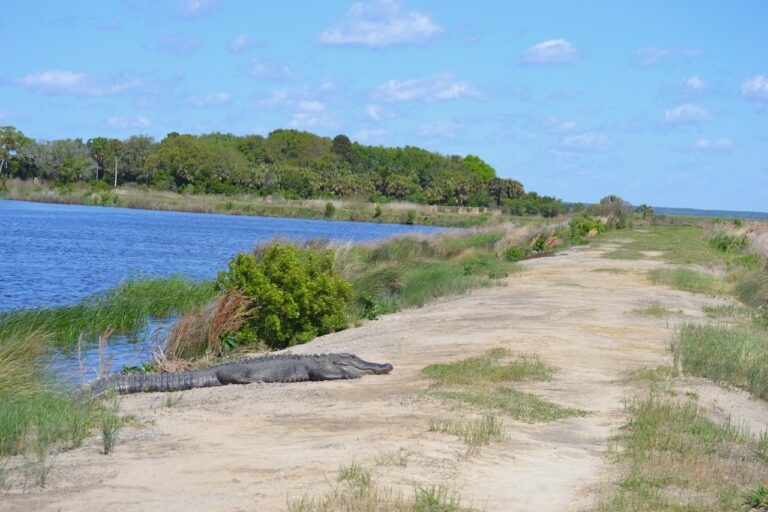
Prior to the turnaround, we saw the place where workers were starting to build a dam to close the smaller breach. On that walk across to the west side of the impoundment, we found a vantage point to view what was surely the larger breach in the eastern dike in the distance, noting a wide opening of what would have been shrub growth on that bank. Tantalizing, yet so far away.
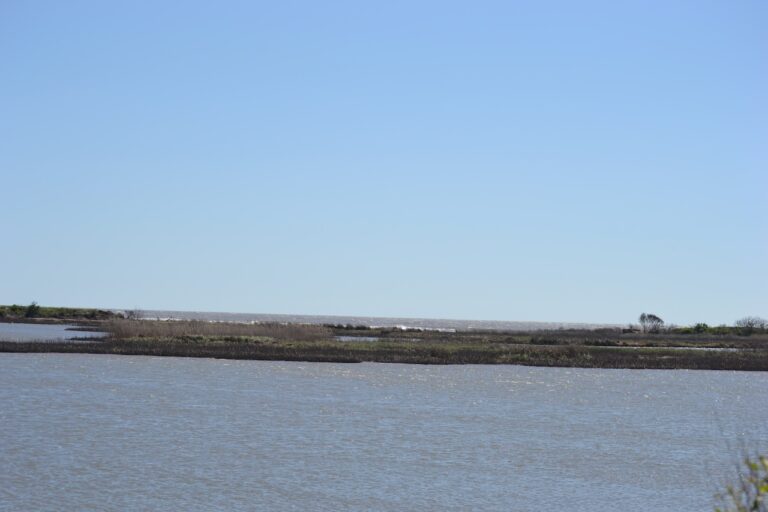
One week later, I planned another trip to approach that place – sail Kingfisher over to the Northeast Point, and walk the beach until the breach. I decided on an early start despite the possibility of no wind, and that was the case upon arriving at the landing. Laughing gulls, a kingfisher, and no-seeums presided over the calm waters. A light breeze came up and allowed me to cross the Intracoastal Waterway ahead of a friendly northbound vessel – the captain of the snowbird waving. I joined the outgoing tidal flow.
The calm/light breeze and quiet of Kingfisher’s passage allowed for the sounds of the marsh to muffle construction and traffic noise on the mainland and ICW. Bird sound was everywhere – the bleating calls of royal terns, the whistles of oystercatchers, and the cacophony of laughing gulls from landing to beach. A few dolphins softly exhaled.
I knew the southwest breeze would come up for an easy sail home, but had hoped for a light wind in crossing Bulls Bay. Instead I drifted with the tide, standing to admire the view, the placid waters exposing the heads of breathing loggerhead turtles.
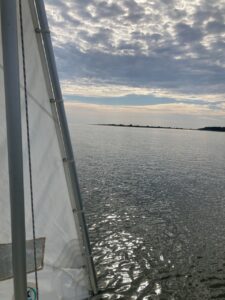
The whole of the Northeast Point was vacant, and I sought out a buried snag on the beach to tether Kingfisher. Despite the lack of wind, the tide had delivered me to the point in one and a half hours. Low tide would arrive a little before noon, giving me plenty of time to reach my destination and return, right after the tide change. The bay was a dead calm as I began the walk around the point.
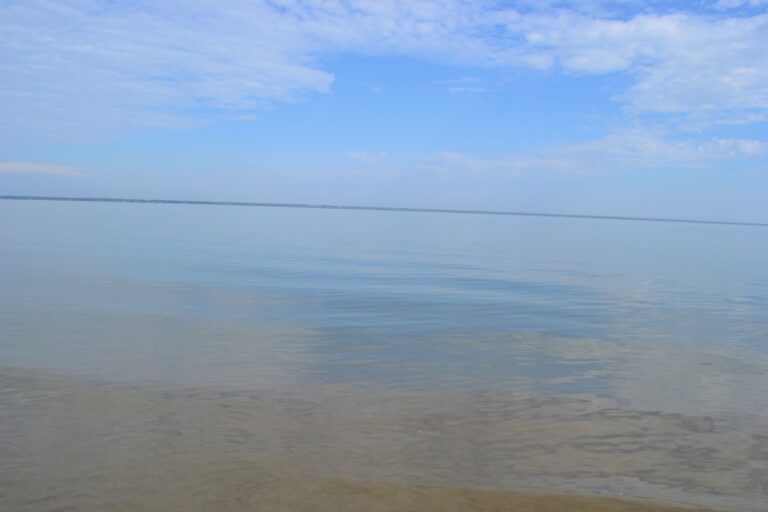
The voyage effort was more than made up for by the beach scape. I noted the changes in familiar places – the entrance to the Lighthouse Road was exposed, no longer behind a number of sand dunes. The tide lines held a wealth of shells, and though this walk was not a shelling venture one Florida horse conch was too pristine to leave behind.
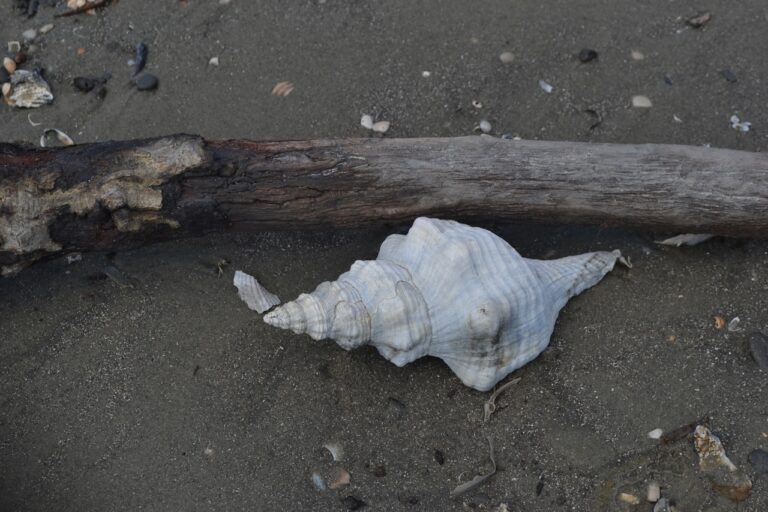
The mud flats, old marsh sediments exposed at low tide, attracted many shore birds, appearing in the hundreds. At times a group would take off, flying above the surf, and land again as a unit. A trio of oystercatchers did not join the feeding, but lingered above the water line. A pair of Wilson’s plovers stayed further away close to the sand dunes. Between the beach and the Jack’s Creek dike sat shallow ponds with saltwater cordgrass, a conducive habitat for wading birds.
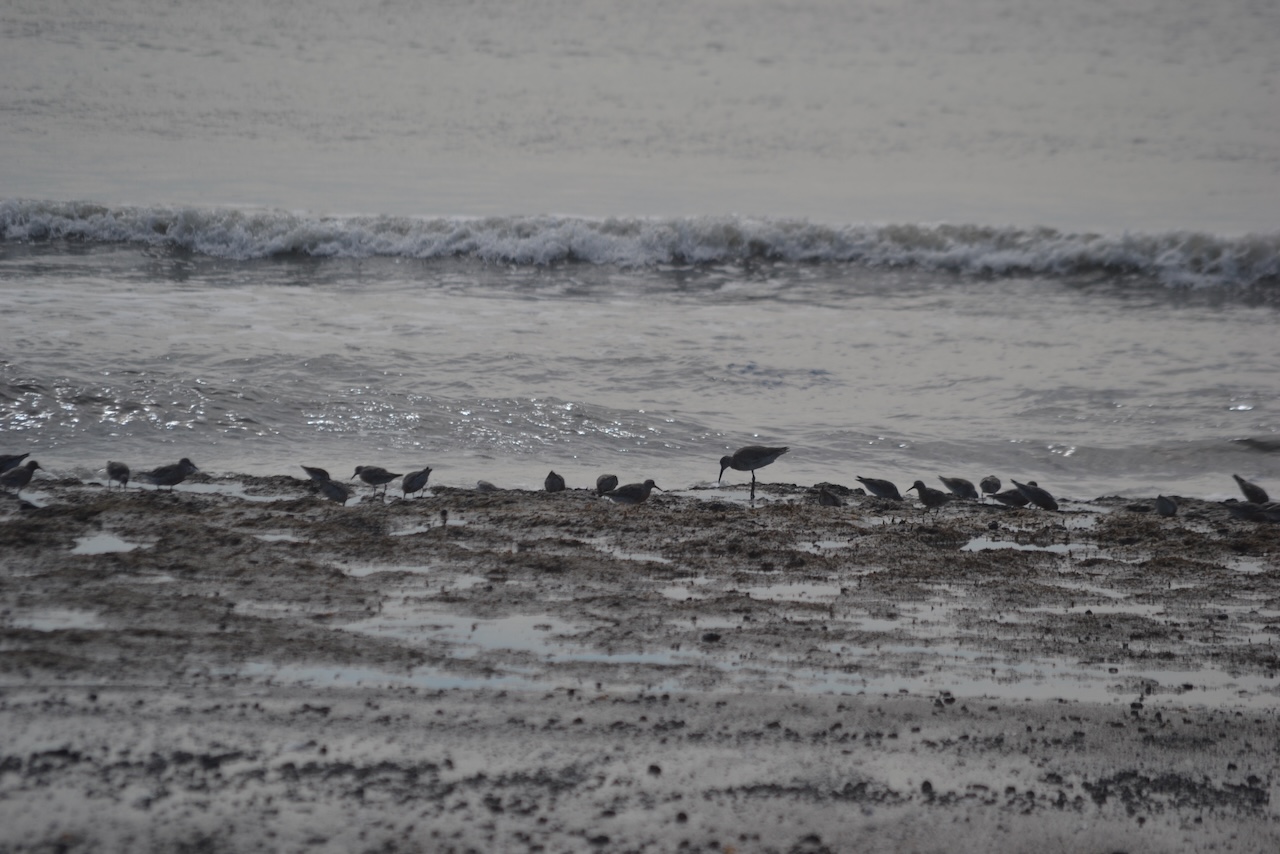
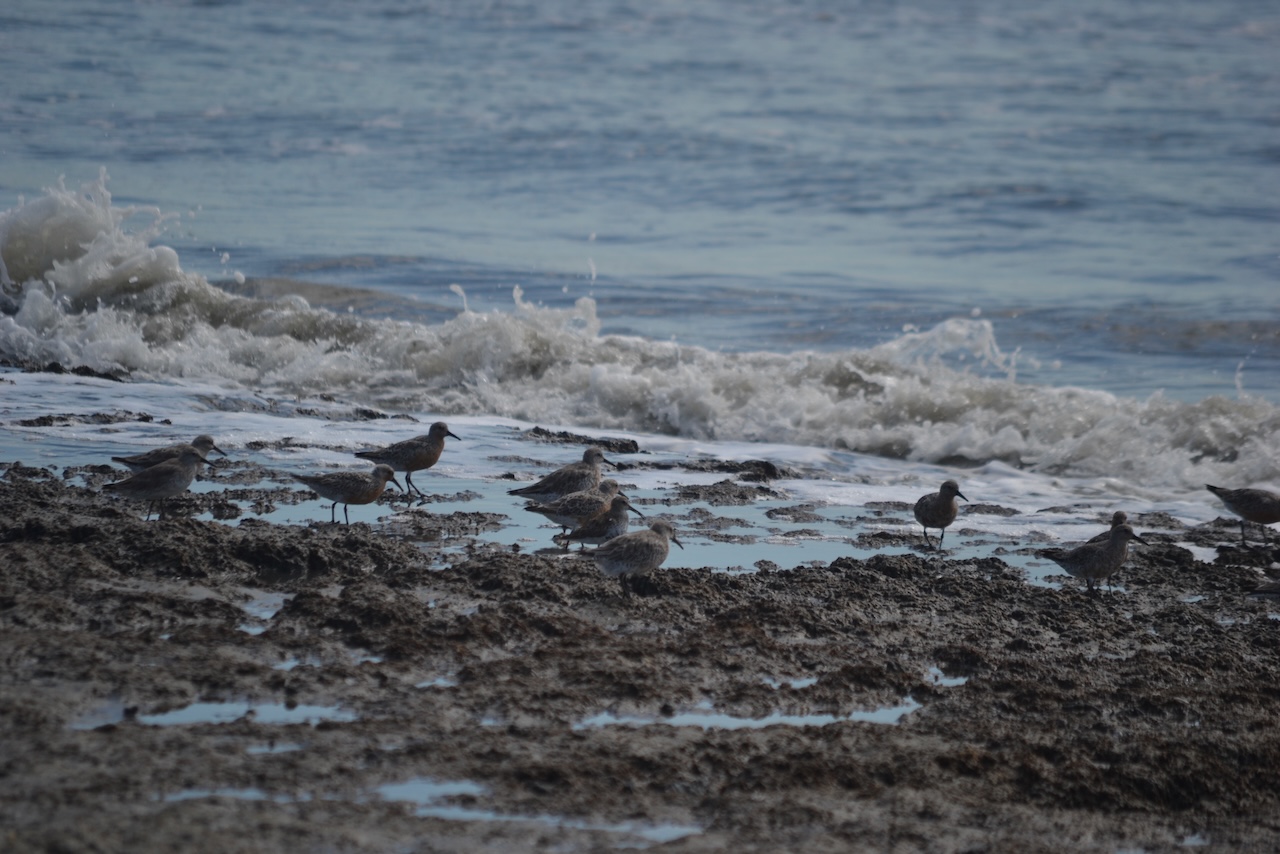
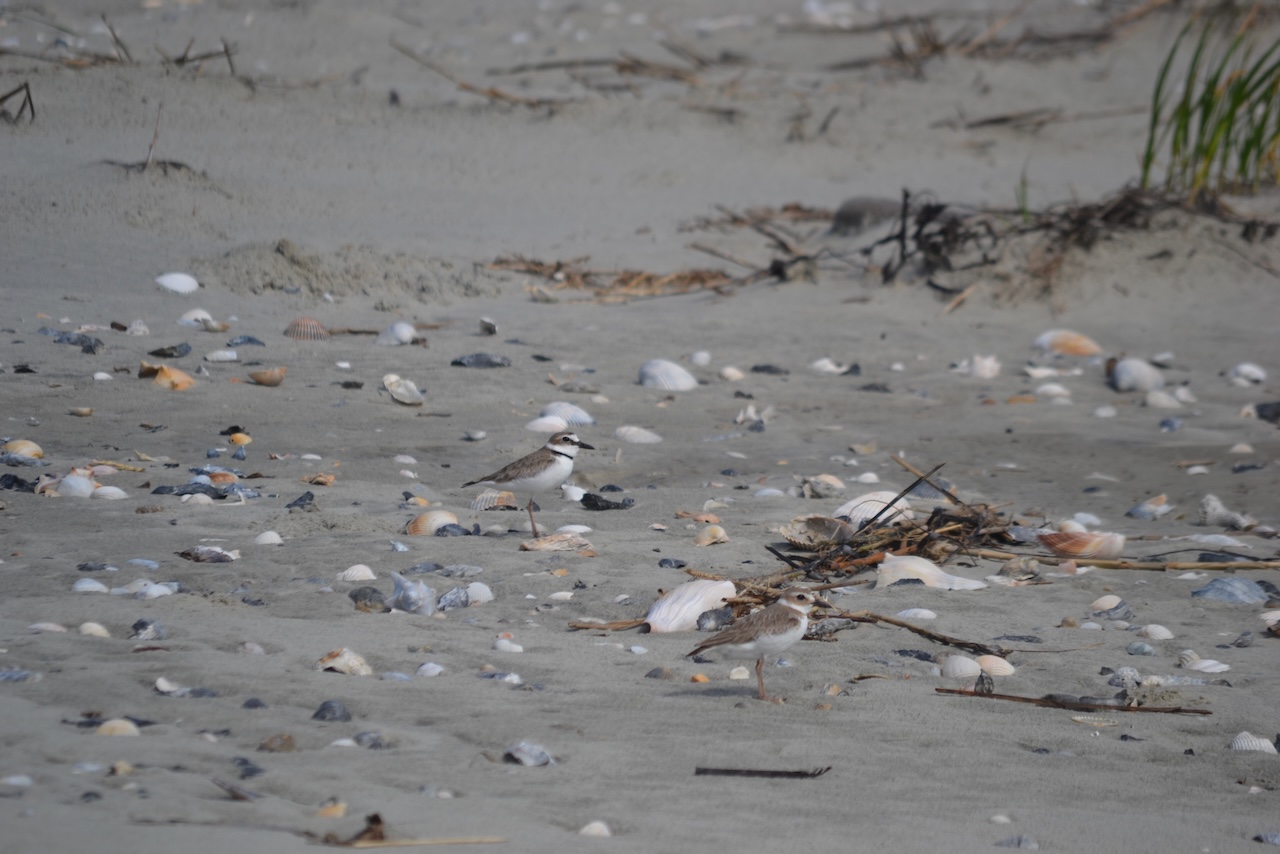
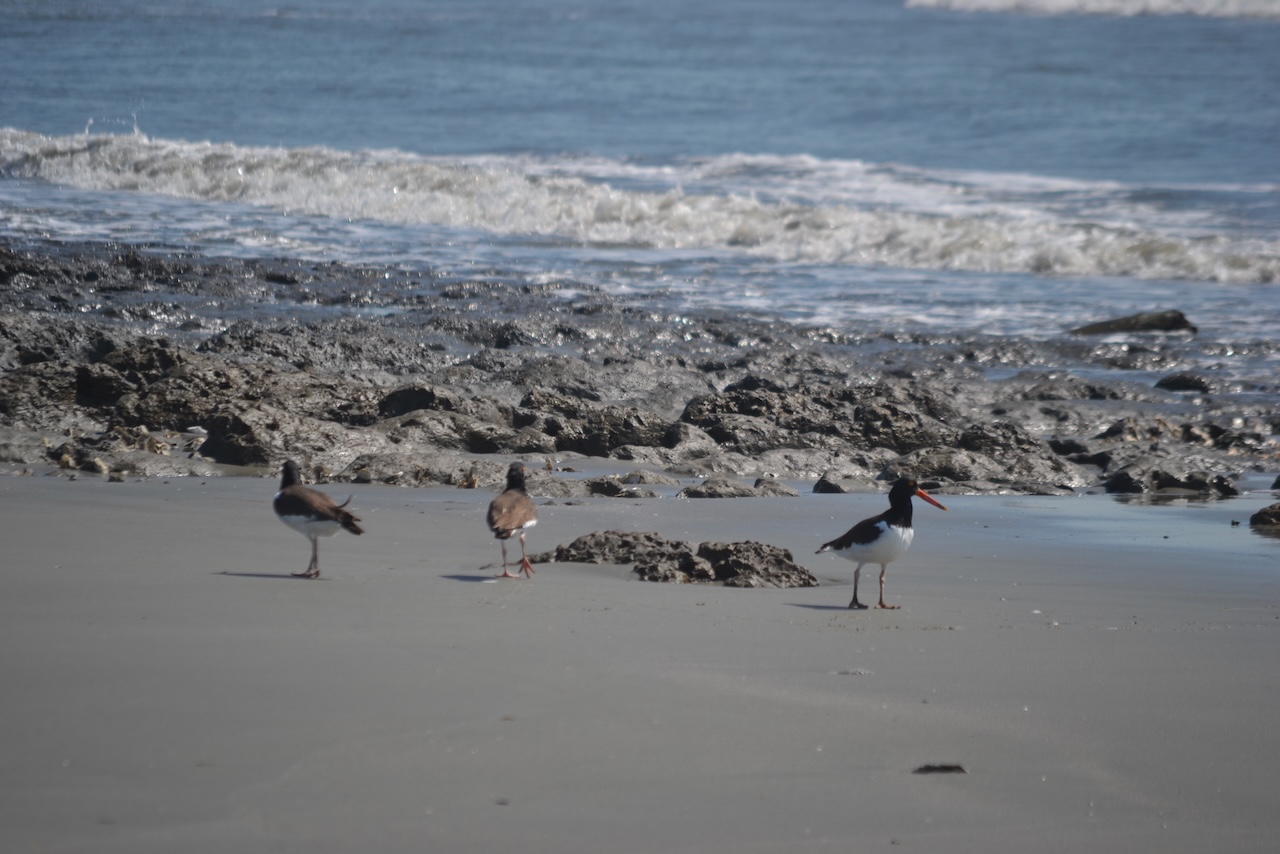




What was my mission all about to the dike breach? I had been watching this specific section of the embankment where Hurricane Hugo had opened it up on the receding of the storm surge. A secondary dike had been built behind the outermost dike that washed away in the first decade of the twenty-first century. Refuge staff labored at ongoing efforts to strengthen the remaining dike, though watching the inexorable actions of the Atlantic waters, I knew in my lifetime it would fail.
An osprey flew off when I arrived at the opening to the impoundment. The waterway flowing through was smaller than expected, but the distance between the cutoff dike sections was quite long – perhaps a quarter of a mile. The exposed grounds in the opening were strewn with the hardened bags of cement once placed here to shore up the threatened dike, and tossed aside like children’s toys.
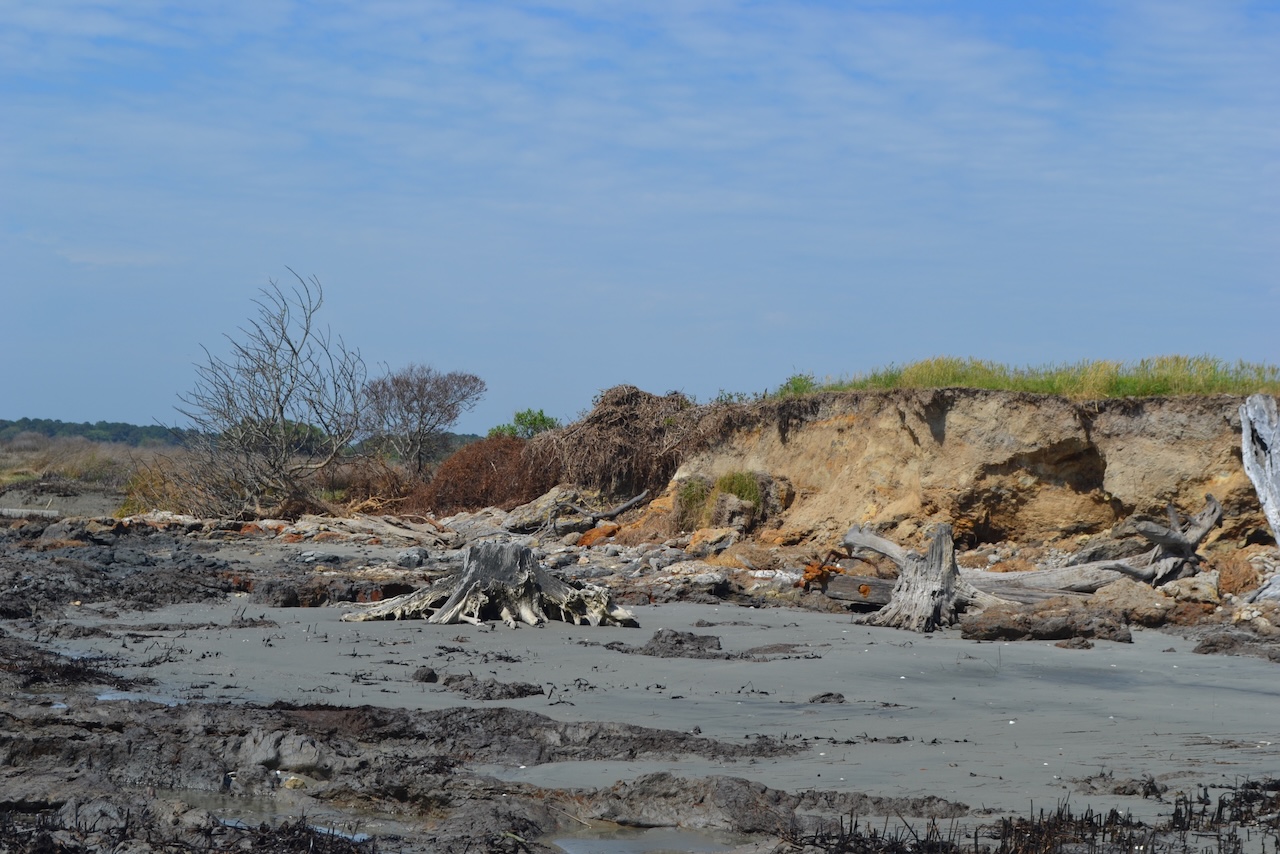
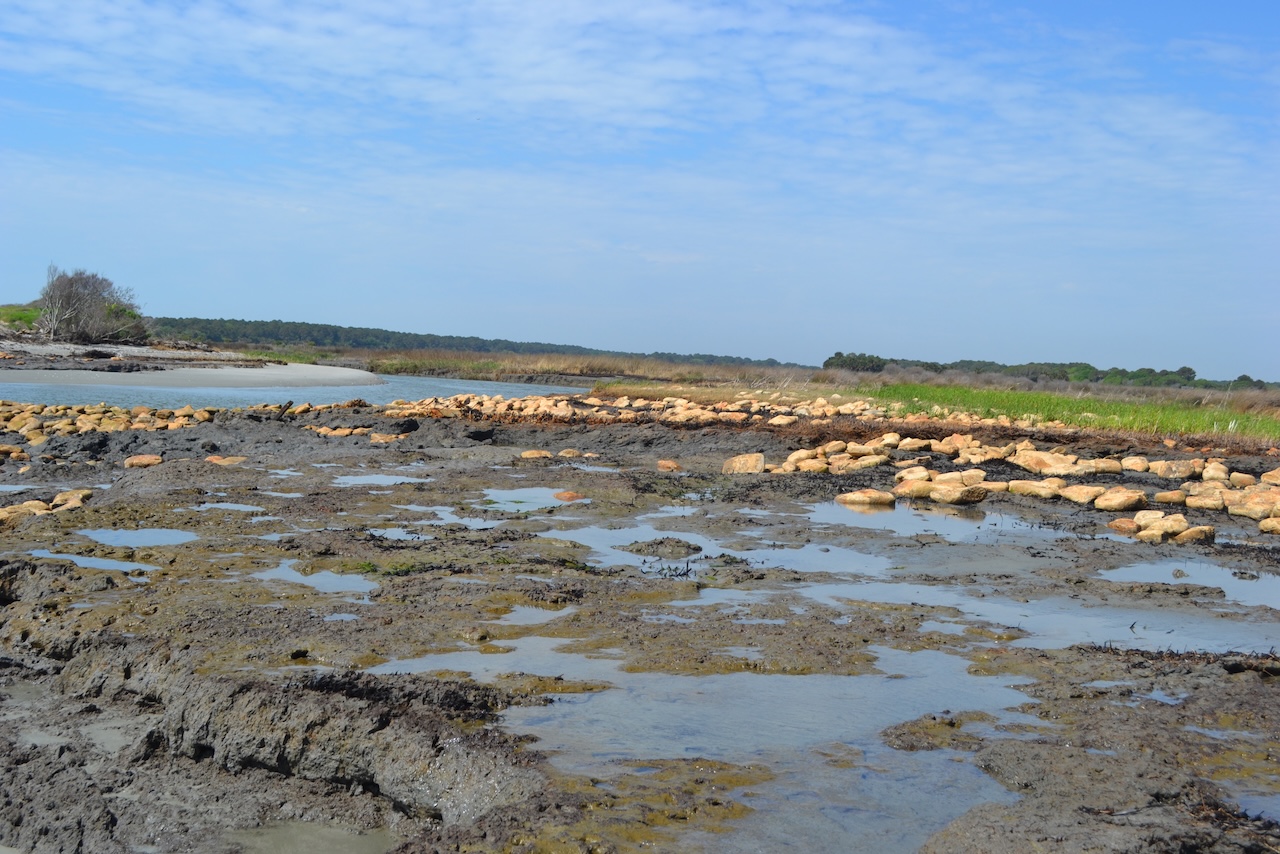
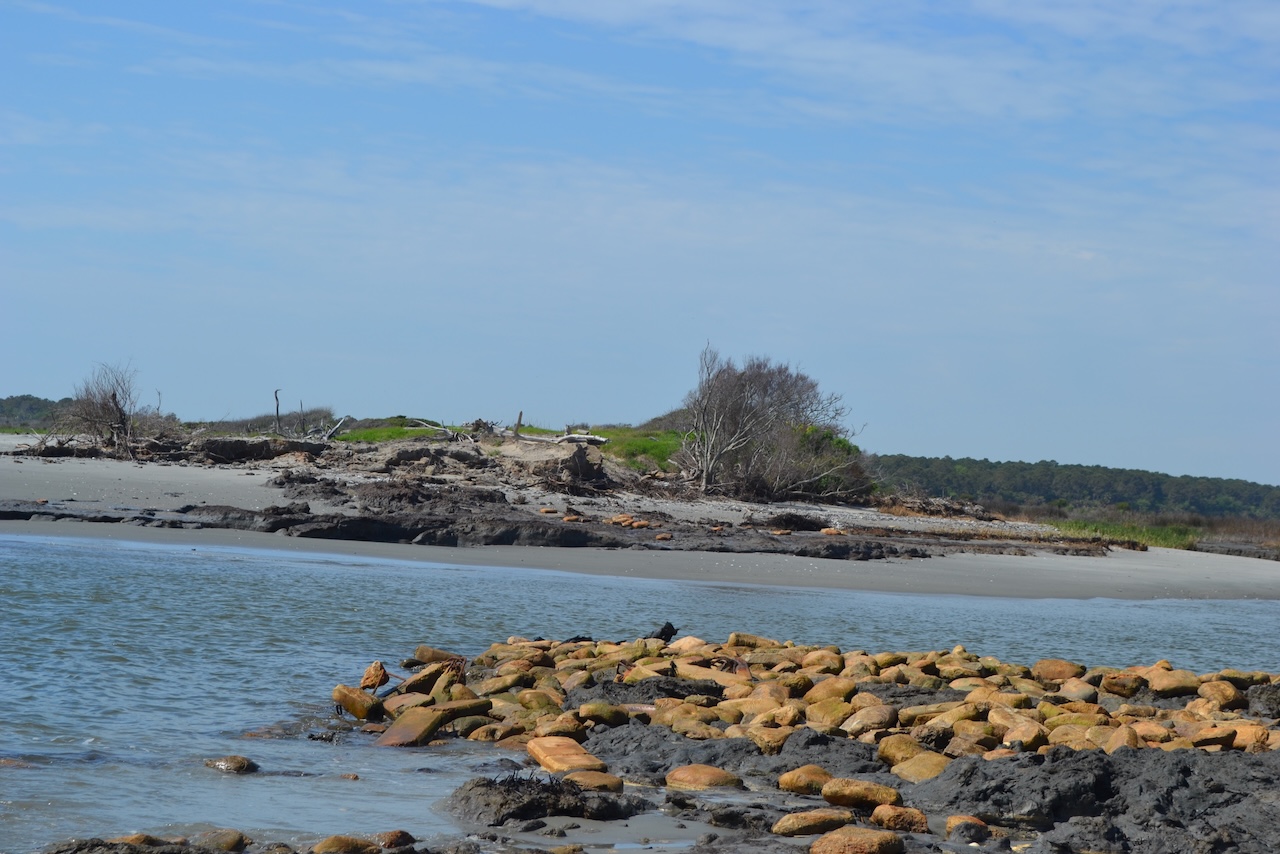
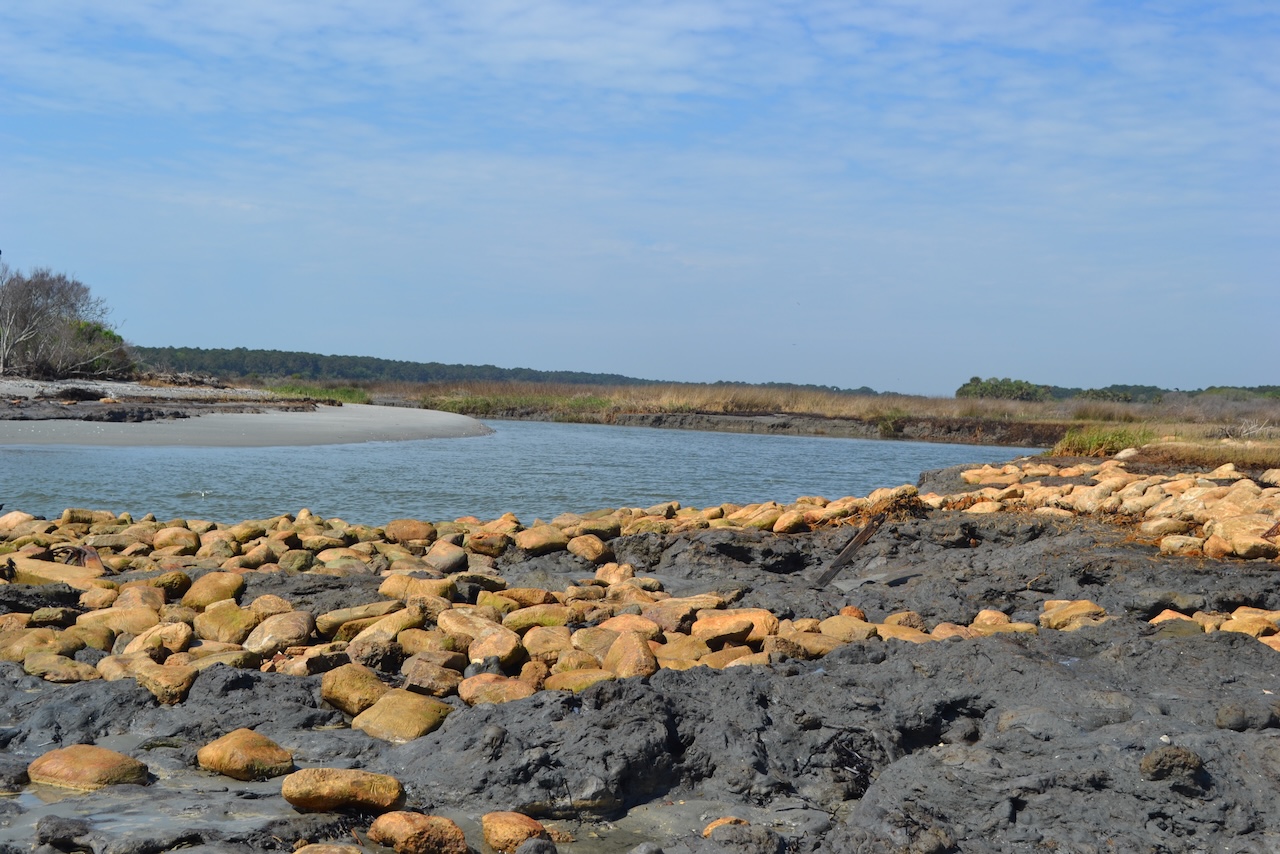
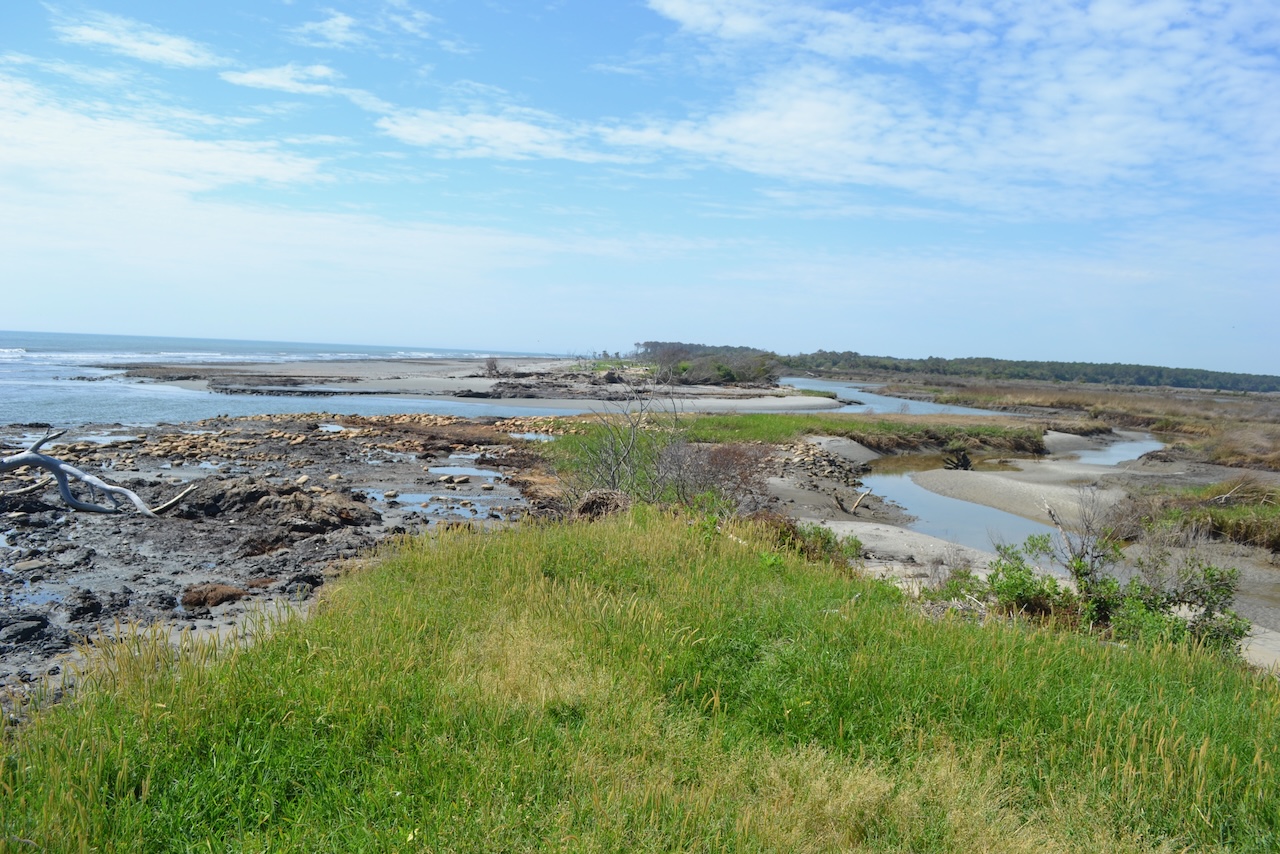
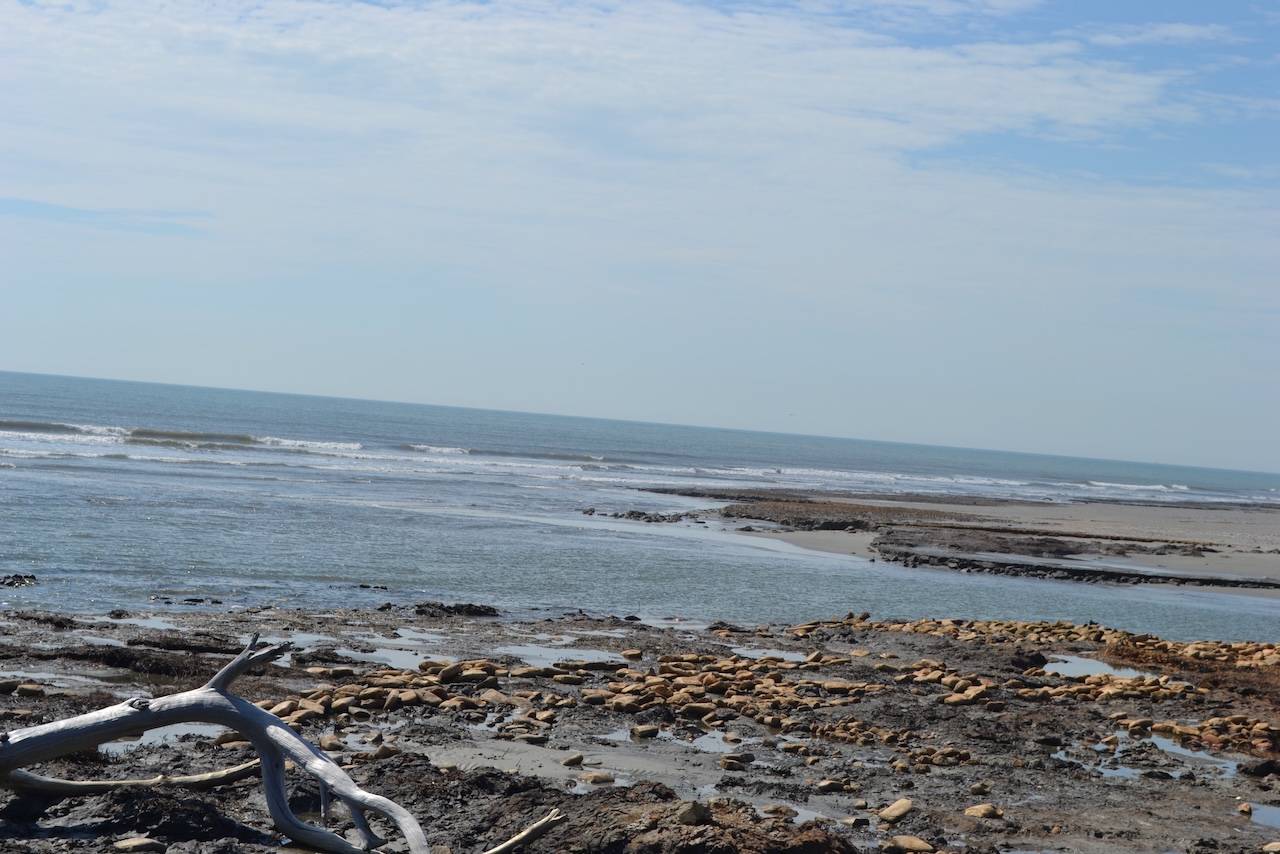
From the dike the views into the Jacks Creek impoundment presented a transformed landscape of mudflats and limited water. I wondered: How could this repair be made? And would it? How would wildlife fare in the drained waters?
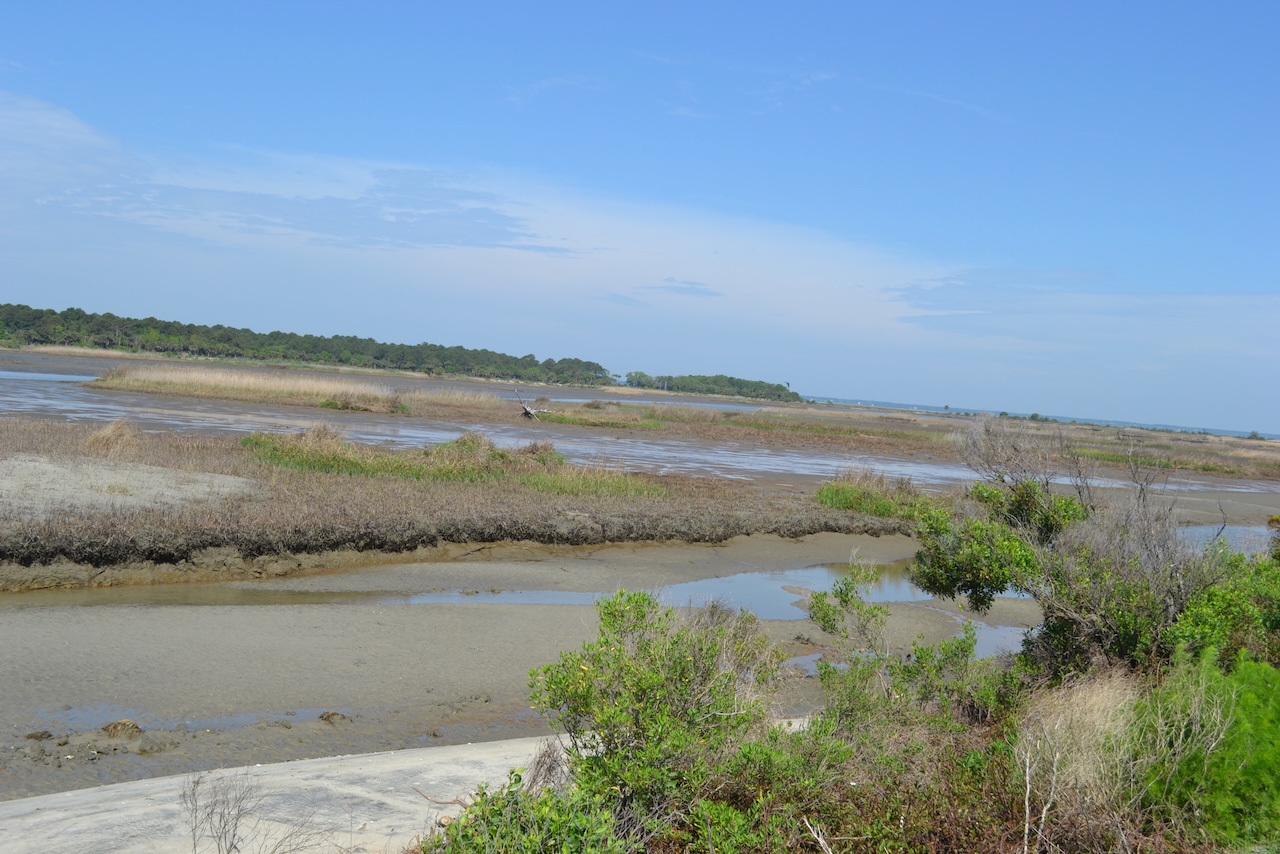
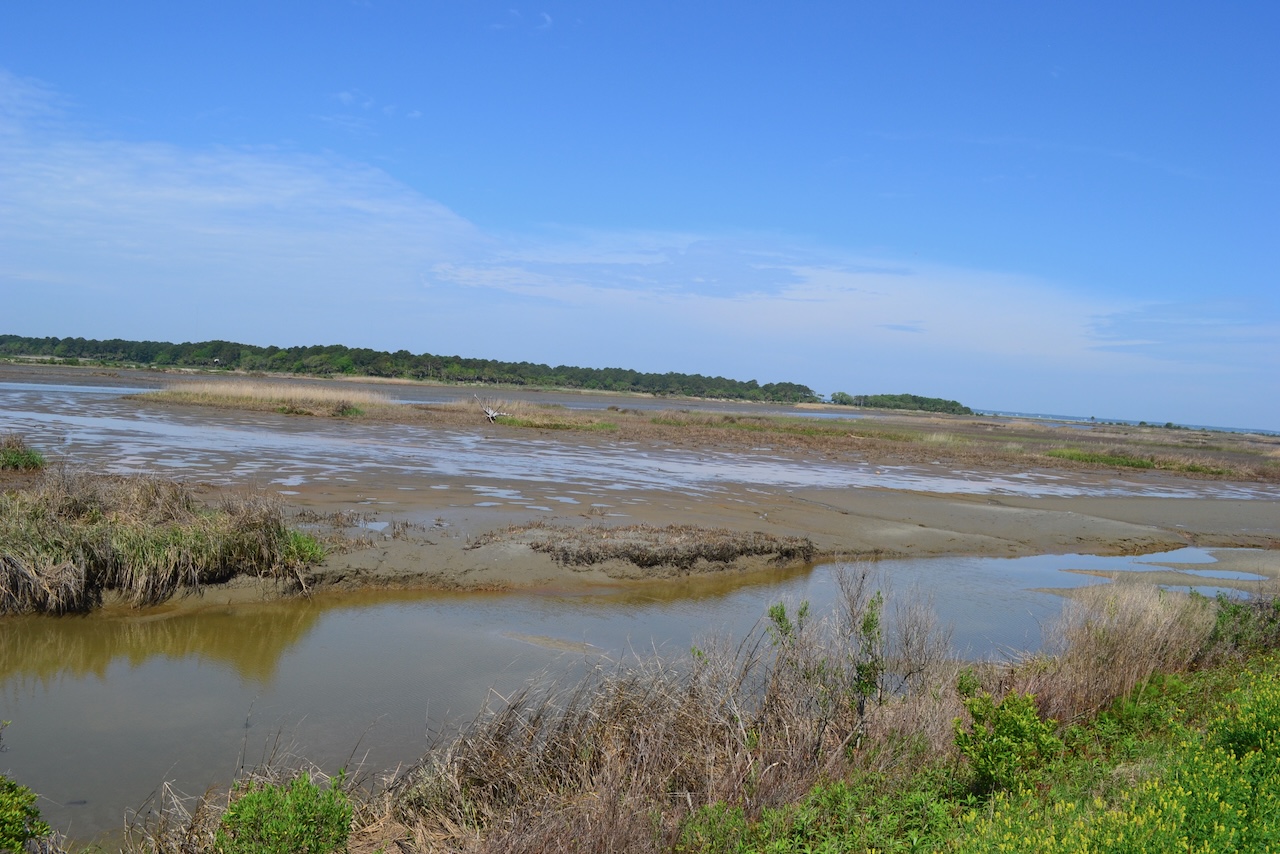
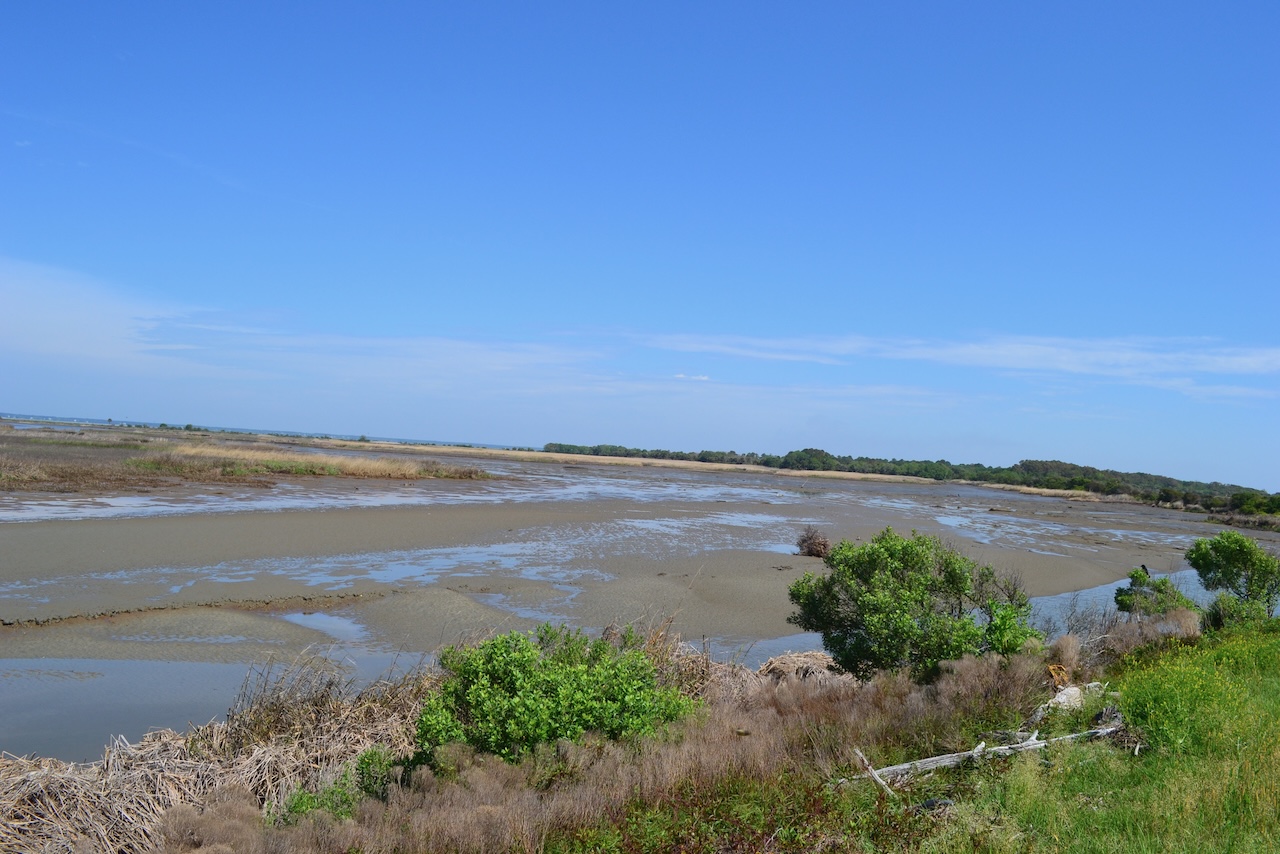
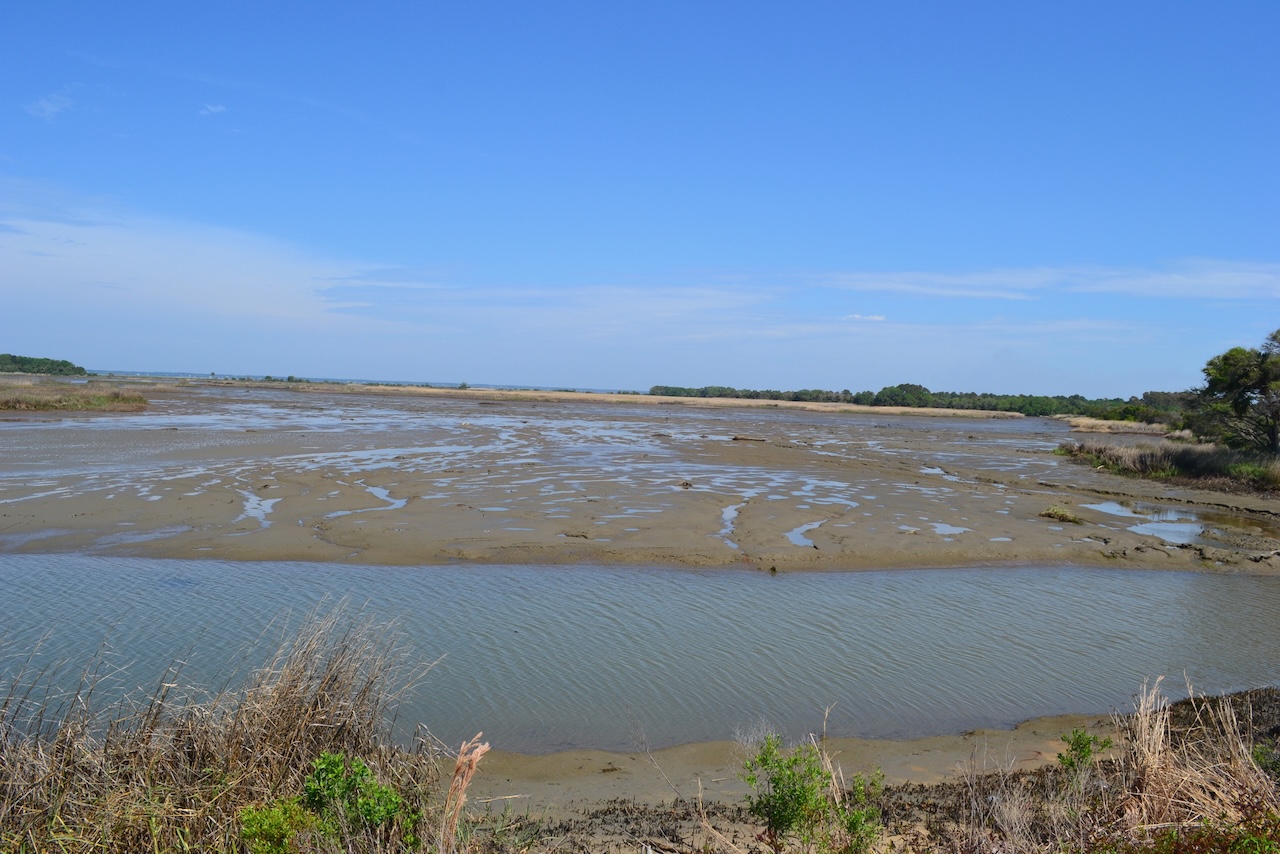
I made the return walk to the Northeast Point at dead low tide, and the shorebirds continued to probe the mud flats for invertebrates. The osprey previously seen had found a modest perch along the beach. At the point, I passed a landed boat with four people on the beach, the first seen on the island today. I took time to snack and wait for a little more wind, and the turn of the tide. As I prepared to head out, a ray swam by my feet in the shallow water.
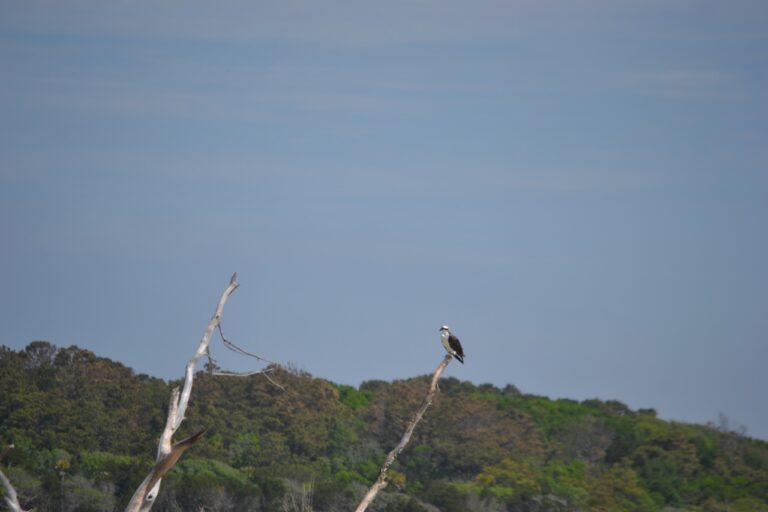
The sail back across the bay and through the creeks was uneventful, though the trip did not end serenely. With the boat tied up next to the floating dock, I backed the trailer down the ramp. As I walked toward the floating dock, alarm rose as a large northbound cabin cruiser motored by the ramp. My quickened pace turned into a run down the dock as sizable waves from his wake formed to break in the shallow water. I grabbed Kingfisher to protect from what were now breakers crashing over my boat and threatening to smash the hull into the dock. Three sets of waves passed over the deck and filled up the cockpit. The snowbird never slowed.
$%&*!!!
I enjoyed this commentary. I wished I was on a Kingfisher of my own!
This is Mary Lou Scott-we talked about your Long Island relatives at your book signing for The Santee Delta. I’ve not started it yet-Race Week and a few other regattas took up my time. But I WILL get to it.
Hope you are well.
Hope you are having fine sailing.
FYI>>> the arrows for the slide show are more visible than previous attempt.
The Island is a prime example of mans futile efforts to control Mother Nature,… Remember, the only thing CONSTANT is CHENAGE :)!
It is the frontline of sea level rise
Thanks for the great photos and commentary … I enjoy them and they make me feel like I’m on the adventures with you.
Thanks for following, and glad you are enjoying the adventures.
Very frustrating when the wake of other boats comes when you have your craft in the transition zone at the landing or tied to a dock. I’ve been there many times and share your “*&%#!” The saying/rule that “you are responsible for your wake” doesn’t mean much when you’re holding on to a bucking hull and the idiot is blasting past. Love your writing and pictures!
Heh Bill thanks for noticing and commenting about the end of my trip. You are the only one commenting on this, so at least I know you got through the post.
Thanks for the article Bob, you did fail to mention quite how nerve wracking it was running the gauntlet of those many Alligators ! Enjoyed the experience thoroughly and look forward to sailing over with you again at some point. Rod
Yes, didn’t mention it, for the gator-phobic readers. The photo of the gator on the dike is the stubborn one who would not move.